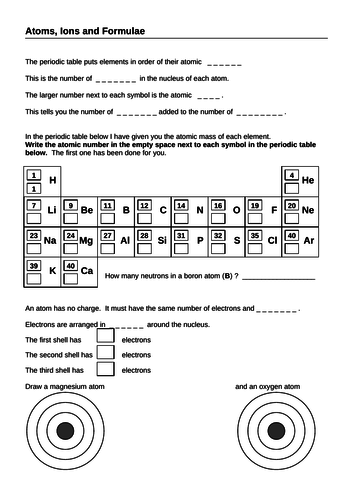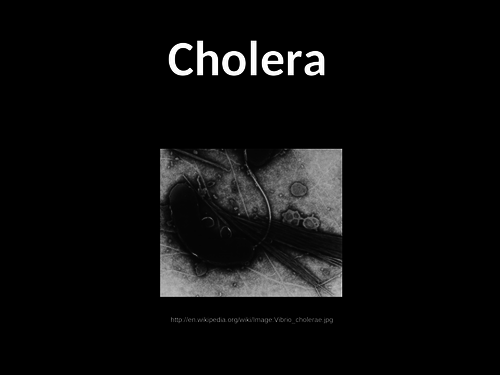68Uploads
34k+Views
38k+Downloads
All resources

B2(D): Digestion Glossary and 2 Crosswords (AQA 9-1 GCSE Science)
Organisation (Digestion) Glossary: Written for AQA 9-1 GCSE Science but it would relate to other specifications. I wrote it by going through the syllabus/textbooks and picking out a mixture of key words and words which I thought students might not know. I’ve put in student-friendly definitions. It covers the digestion part of the topic which we teach separately from the transport and non-communicable parts.
There are two crosswords (about 20 words in each), based directly on the glossary. I tend to give neighbouring students different crosswords and so avoid too much copying. They are about the same difficulty so could be used competitively. They are deliberately straightforward to test the extent to which they have learnt the vocabulary.

B2(T): Transport Glossary and 3 Crosswords (AQA 9-1 GCSE Science)
Organisation (Transport / Non-communicable Disease) Glossary: Written for AQA 9-1 GCSE Science but it would relate to other specifications. I wrote it by going through the syllabus/textbooks and picking out a mixture of key words and words which I thought students might not know. I’ve put in student-friendly definitions. It covers the transport and non-communicable disease part of the topic which we teach separately from the digestion parts.
There are three crosswords (about 20 words in each), based directly on the glossary. I tend to give neighbouring students different crosswords and so avoid too much copying. They are about the same difficulty so could be used competitively. They are deliberately straightforward to test the extent to which they have learnt the vocabulary.
Answer keys are included.

B1 Cell Biology Glossary and 3 crosswords (AQA 9-1 GCSE Science)
Cell Biology Glossary: Written for AQA 9-1 GCSE Science but it would relate to other specifications.
Three crosswords (20+ different words in each), based directly on the glossary. I give neighbouring students different crosswords and so avoid too much copying. They are about the same difficulty so could be used competitively. They are deliberately straightforward to test the extent to which students have learnt the vocabulary.

Flower structure
Students use a crossword to label a diagram of a flower (sepal, petal, stigma, stamen, ovary, carpel etc). Two versions: one basic (omitting androecium, calyx etc), the other more testing. Can be used following flower dissections - students who finish first get on with the crossword. Answer sheets provided.
I’ve used it with whichever aged students I happen to be dissecting flowers with.

B4: Bioenergetics Glossary and 2 Crosswords (AQA 9-1 GCSE Science)
Bioenergetics Glossary: Written for AQA 9-1 GCSE Science but it would relate to other specifications. I wrote it by going through the syllabus/textbooks and picking out a mixture of key words and words which I thought students might not know. I’ve put in student-friendly definitions. It covers the transport and non-communicable disease part of the topic which we teach separately from the digestion parts.
There are two crosswords based directly on the glossary. I tend to give neighbouring students different crosswords and so avoid too much copying. They are about the same difficulty so could be used competitively. They are deliberately straightforward to test the extent to which they have learnt the vocabulary.
Answer keys are included.

B3: Infection Glossary and 2 Crosswords (AQA 9-1 GCSE Science)
Infection and Response Glossary: Written for AQA 9-1 GCSE Science but it would relate to other specifications. I wrote it by going through the syllabus/textbooks and picking out a mixture of key words and words which I thought students might not know. I’ve put in student-friendly definitions. It covers the transport and non-communicable disease part of the topic which we teach separately from the digestion parts.
There are two crosswords based directly on the glossary. I tend to give neighbouring students different crosswords and so avoid too much copying. They are about the same difficulty so could be used competitively. They are deliberately straightforward to test the extent to which they have learnt the vocabulary.
Answer keys are included.

Heart Disease and Smoking Data Analysis - 'Edit the powerpoint' task (GCSE)
Heart disease and smoking - data analysis task - A powerpoint for students to edit and complete. Written to give less able students something more interesting to do than endless worksheets. It worked pretty well when I used it in the computer rooms. I used it after a heart dissection. The answers are included as a second powerpoint. It is sufficiently general for any syllabus and concentrates on How Science Works. Would be easy to use on the VLE as a homework activity.

Balancing combustion equations (Structured powerpoint for students to edit)
This is an 8 slide structured powerpoint for students to edit. It looks at balancing simple equations. It deals, as you’d expect, with numbers of molecules, numbers of atoms, subscript, conservation of atoms. I wrote it to accompany a GCSE module on combustion and air pollution. It is in the form of a workbook where students can edit the powerpoint presentation; moving atoms around (copying and pasting as necessary). There is a worked example to start with and the slides get harder. It works well on a smartboard. For lower ability students it is better done in smaller chunks. It could be used as a homework if put on a VLE. A powerpoint with the answers is included (useful for self/peer marking).

Structure, bonding and the mole. 13 slide powerpoint for students to edit. (GCSE)
A revision activity for students which uses editing a colourful powerpoint as a hook to get them into the science of moles, bonding etc. It works well with students who find moles too abstract. Students open it within powerpoint to edit the slides before viewing as a slideshow. I’ve used it with very weak KS4 groups. It can easily be edited to suit any syllabus: exercises cover bonding, compounds, the Periodic Table, calculating molar mass of compounds etc. An answer powerpoint is provided. It could easily be used as a homework on the VLE.

Atoms, ions and formulae. (3 side worksheet which deals with ionic compounds) (GCSE)
A revision worksheet for GCSE students. It shows how the charge of an ion and the position in the periodic table are related to atom structure. It leads them from this to working out formulae. I’ve used it with groups across the ability range.
Also included a summary sheet for the charges on ions

Topic 7: Organic Chemistry Revision Question and Answer Sheets (inc. Triple)
Three sheets of straightforward revision questions. Written to provide simple recall test of what students have learned and need to learn (to reassure them as much as anything). Taken pretty much directly from the AQA 9-1 GCSE syllabus - Organic Chemistry. Answer sheets are included. Would work well as a starter, plenary or on a VLE.
***Key words: *** Organic chemistry, Alkanes, Alcohols, Alkenes, Carboxylic acids, Esters, Polymers, Feedstock, Fuels, Crude oil, Cracking, Petrochemicals, Polymerisation

Transpiration and water uptake in plants (2 powerpoints, 2 w/s, crossword). Post 16
Animated, interactive powerpoint which explains water uptake (apoplast/symplast pathways), transpiration and xylem structure The water uptake worksheets (including a crossword) complement the powerpoint and include answers. The labelling the leaf powerpoint is a hyperlinked ‘click and name’ slide-show. Aimed at A-level.
Bundle

5 Biology Glossaries and 12 Crosswords (AQA 9-1 GCSE Combined Science Paper 1)
5 Glossaries and 12 crosswords to cover all of the Biology units of the AQA 9-1 GCSE Combined Science Paper 1 syllabus.
Cell Biology (3 cwd)
Organisation (Digestion) (2 cwd)
Organisation (Transport & Non-com Disease) (3 cwd)
Infection and Response (2 cwd)
Bioenergetics (2 cwd)
The crosswords are based directly on the glossary to encourage students to revise and then to test their recall. They are useful across the ability range. I tend to give neighbouring students different versions to discourage copying. They are roughly the same difficulty and could be used competitively.
Each crossword has about 20 words and an accompanying answer key with the same format as the original crossword for use on a projector for peer/self marking.

Regulation of blood glucose (A-level). 20 slide powerpoint, notes, two worksheets and a crossword
Animated, interactive powerpoint explaining glucose regulation and diabetes. Animations take students through the effects of hormones on liver/adipose/muscle cells (inc. carrier proteins / cAMP). The worksheets (including a crossword) complement the powerpoint. There is a ‘notes’ worksheet included so that students don’t need to copy the diagrams. Answer sheets included.

Ionising Radiation, Nuclear Reactors and Litvinenko (4 GCSE worksheets).
Aimed at foundation tier GCSE students. - cloze, colouring and a bit of reasoning thrown in. The Litvinenko sheet is a bit wordier but provokes discussion. You will find numerous news clips to illustrate it. Answer sheets included.

Polymers: Hexagon revision puzzle and Self-marking excel worksheet (GCSE)
Triangle puzzle on polymers where students match sentence fragments to construct a large hexagon. It is a revision activity which works across the ability range and is enjoyed by students. This could be used for groups of three, and it works well as a race. An answer sheet is provided.
Introduction to refining and polymerisation. An onscreen cloze/labelling activity written in Excel; it ticks each word as students get them correct. Students like it because it gives immediate feedback. I’ve used it with all ability groups at GCSE. If you want to work out how it’s done, the password to unprotect it is ‘eliziczac’. Save as a template to stop students overwriting the original. Works well on a VLE.

Cholera: Data handling and Mechanism of infection
Standalone A-level cholera data handling and accompanying powerpoints and worksheets.
The main powerpoint introduces cholera and explains how it affects the small intestine’s transport proteins leading to diarrhoea. The second shows the December 2008 Cholera outbreak in Zimbabwe using UN data. The lesson can be introduced with news clips/articles (a search for ‘Zimbabwe 2008 cholera outbreak’ turns up lots). An understanding of the mechanism of cholera infection is not needed to deal with the data handling - which is very much aimed at reliability, sampling and so on. Written to support A-level Biology.

Topic 6: The Rate and Extent of Chemical Change Revision Question and Answer Sheets
Four sheets of straightforward but challenging revision questions. Written to provide simple recall test of what students have learned and need to learn (to reassure them as much as anything). Taken pretty much directly from the AQA 9-1 GCSE syllabus - The Rate and Extent of Chemical Change. Answer sheets are included. Would work well as a starter, plenary or on a VLE.
***Key words: *** Rate of reaction; Collision theory; Activation energy; Catalysts; Reversible reactions; Dynamic equilibrium; Le Chatelier’s Principle

Topic 4: Chemical Changes Revision Questions and Answer Sheets (inc. Triple)
Four sheets of straightforward revision questions. Written to provide simple recall test of what students have learned and need to learn (to reassure them as much as anything). Taken pretty much directly from the AQA 9-1 GCSE syllabus - Chemical Changes. Answer sheets are included. Would work well as a starter, plenary or on a VLE.
Keywords
Reactions of acids with metals; Salts; Neutralisation; Soluble salts; pH scale; Titrations; Electrolysis; Metal extraction; Half equations

Topic 8: Chemical Analysis Revision Question and Answer Sheets (inc. Triple)
Three sheets of straightforward but challenging revision questions. Written to provide simple recall test of what students have learned and need to learn (to reassure them as much as anything). Taken pretty much directly from the AQA 9-1 GCSE syllabus - Chemical Analysis. Answer sheets are included. Would work well as a starter, plenary or on a VLE.
Key words:
Purity; Formulations; Chromatography; Mixtures; Identification of gases; Identification of ions; Flame tests;




















